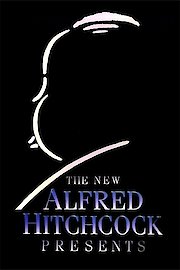
Ep 32. One Grave Too Many
- May 22, 1960
- 26 min
-
7.5 (313)
In the gripping season 5 finale of Alfred Hitchcock Presents, titled One Grave Too Many, the audience is invited into a twisted narrative that weaves together themes of deception, morality, and the complexities of human nature. This episode showcases Hitchcock’s signature storytelling style, blending suspense with dark humor while exploring the darker sides of the human psyche.
One Grave Too Many focuses on the life of a seemingly ordinary man who finds himself entangled in a web of his own making. At first glance, he appears to be an unremarkable individual, living a quiet, mundane life. As the story unfolds, however, we learn about his inner turmoil and the desperate measures he is willing to take to escape his shortcomings and the burdens of his past. The episode’s protagonist becomes increasingly desperate, leading to a series of morally ambiguous decisions that blur the lines between right and wrong.
The narrative begins on a rather ordinary day, setting a tone of familiarity that quickly shifts into something more sinister. The episode establishes a large cast of supporting characters, each adding depth to the story and reflecting various aspects of the protagonist's moral decay. These characters, including friends, family, and adversaries, each play a crucial role in driving the plot forward, illuminating the protagonist’s choices through their reactions and interactions.
As we delve deeper into the plot, Hitchcock expertly builds tension and intrigue, layering the story with unexpected twists that pique the viewer's curiosity. The protagonist's actions lead him down a perilous path, as he must navigate not only his own conscience but also the scrutiny of those around him. The narrative becomes an exploration of guilt, paranoia, and the consequences of one’s actions – themes that resonate deeply and echo throughout Hitchcock's filmography.
Visually, the episode is a feast for the eyes. Hitchcock's knack for framing shots, using light and shadow to create atmosphere, is on full display. Each scene is meticulously crafted, enhancing the sense of suspense and foreboding that permeates the story, ensuring that viewers remain on the edge of their seats. The choice of settings, from cozy domestic spaces to eerie, isolated locations, serves to amplify the emotional stakes, making each revelation resonate even more profoundly.
What sets One Grave Too Many apart is its ability to provoke thought regarding justice and retribution. As the protagonist's situation escalates, viewers are prompted to grapple with questions about morality and the extremes to which one might go when faced with desperation. It encourages an examination of the human condition – asking the audience to reflect on their values and the choices they would make in similar circumstances.
Hitchcock’s signature dark humor also finds its way into the storyline, balancing the darker elements with moments of irony and wit that characterize his storytelling. This touch adds a layer of complexity to the narrative, allowing viewers to laugh even as they gasp in horror. It showcases Hitchcock’s unique ability to marry suspense with comedy, presenting a multifaceted view of the characters’ journeys.
As the episode reaches its climax, the mounting tension culminates in a stunning denouement that is both satisfying and thought-provoking. Hitchcock prompts the audience to question the fate of the characters – leaving them with lingering thoughts long after the credits roll. The resolution is a masterclass in ambiguity, compelling viewers to consider the broader implications and alternate outcomes that could have emerged from the protagonist's fateful decisions.
With its engaging plot, well-drawn characters, and a stylistic flair that epitomizes Hitchcock's genius, One Grave Too Many stands out as a memorable installment in Alfred Hitchcock Presents. This episode invites viewers to peer into the darker corners of humanity while also celebrating the intricacies of storytelling that have made Hitchcock an enduring cultural icon.
In summary, One Grave Too Many is a compelling blend of suspense, moral inquiry, and dark wit that illustrates the classic themes of Alfred Hitchcock’s work. It presents a narrative that invites reflection on the nature of guilt and the human capacity for rationalization. Viewers are left not only entertained but also haunted by the moral dilemmas faced by the characters, proving yet again why Hitchcock remains a master of suspense and psychological storytelling.
